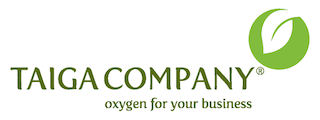How To Protect Your Business And Brand For The Future
For many businesses nowadays, the shelf-life is one that can be fairly limited if the concept or idea has been done prior. It can be hard to build a brand and to build a business that lasts a few years, let alone outlast your lifetime.
Protecting your business and brand are two ways in which you can help solidify a future for the company. Of course, it takes a look of hard graft, passion, time, and luck but with these tips, you’ll be able to give your business the best chance of success for the future.
Trademark your name
First things first, make sure your company name has been protected. When starting a business, there are a number of things that need to be checked off the list of basics to cover. One of which, is trademarking your name.
This is an important step because, without it, you’re likely to find yourself in a spot of bother if someone ends up claiming your name before you do. That can be a hard pill to swallow and a tough path to navigate when you’ve made some success in the business already and someone has swooped in to take the glory.
Trademarking your name is easy and it’s something you should be proactive about. To
trademark your name, ensure you’ve read up on what’s required and how to do it as quickly and efficiently as possible.
Solidify commitment to your customer base
In order to keep your business locked in for the future, it’s important to look at how your customer base is growing. Have you got a core base of loyal customers that you know your company can rely on to sustain them for the entirety of your own life? If you’re looking for your business to outlive you, then it’s important you’re setting it up to continue without you.
Solidifying the commitment of your customer base is one that will take some time. It’s something that doesn’t happen overnight and requires loyalty to be earned, not necessarily bought.
Think about ways in which you can attract customers to your business and encourage them to come back again and again. It’s these customers that will sustain you, even in the toughest of times.
Build brand recognition
Branding is an essential part of building a business and it’s something you want to work actively on at all times. When it comes to customers and potential customers encountering your business for the first time, you want the company to be immediately recognizable.
At the same time, if this is their first encounter, then it needs to be a memorable one that will stick in their minds going forward. It takes anywhere between 5-7 interactions with a brand before it’s something a customer remembers permanently. Those brands are typically household names within the industry so it’s important to follow suit where possible.
Keep your information secure
Data is a kingpin in the world of business and is something you want to harbor as much of as possible. It’s useful for getting to know your current customers, the target audience you’re after, and for making important business decisions.
Therefore, it’s important that you keep the information as secure as possible. That requires a good system in place - and a secure one at that.
Fortunately, there are plenty of reputable and knowledgeable companies, all of which are helping businesses to baton down the hatches when it comes to data storage and the security of this storage. After all, you don’t want to find yourself in a situation where you’ve had a breach in your data and it’s resulted in data being stolen or sold on.
For the sake of your customer’s loyalty and trust, keep your information secure by following the current and popular means to do so.
Work towards a strong and trustworthy workforce
It’s often forgotten, especially in bigger companies, but your workforce are an essential part of running the business. If you’re not working towards building a strong and trustworthy workforce, then you might be missing the mark when it comes to protecting your future business.
Allowing great talent to walk out of your doors for greener pastures is not something to encourage and if anything, you want to hold onto those individuals who are making a real difference or showing promise for the company.
Therefore, ensure you offer the right promotions or opportunities for growth to the right staff members. Let go of toxic staff and those who are only going to keep the business behind in the past or worse - stagnant.
Risk assessment business decisions at all times
Risk assessments are great when it comes to strengthening the business and it’s success. When you’re looking to protect your business and brand, the business decisions you make, certainly influence that.
Therefore, it’s important to conduct risk assessments for any business decisions that come your way, now or in the future. Setting up certain protocols to screen any risks is important because risks can go one of two ways.
Look at what areas of your business might benefit from regular risk assessments and when it comes to taking risks, proceed with caution where required. Not everything will be, in reality, as sure of a success as you would believe it to be.
Trust litigation challenges
Trust litigation can play an essential part in safeguarding the future of your business, particularly if there are internal disputes or challenges to estate planning efforts that ensure its continuity. Effective trust litigation requires thorough preparation and legal support. Companies can utilize experienced legal advice to address disputes related to trusts among beneficiaries or trustees, protecting business assets while fulfilling deceased's wishes as intended. Preparedness can not only assist in efficiently resolving conflicts but also serve as a deterrent against future litigation that could damage your business's reputation or financial stability. Therefore, including trust litigation strategies in your risk management plan is not just prudent, it is necessary for maintaining integrity and continuity over the long term.
Train staff to be internet-savvy
Finally, make sure that your staff are well trained when it comes to the internet and all things digital. A lot has changed within the landscape of business and much of that has been influenced by technology and the digital world.
With that being said, it’s important to
make sure your staff are trained in how to navigate the internet safely. That way, they won’t be putting the company at risk, should they encounter those online who might want to cause the business harm in some way.
Protecting your business and brand for the future is important to be proactive about. Hopefully, with these tips, you’ll be able to do right by your business so that it continues to thrive with and without you.


